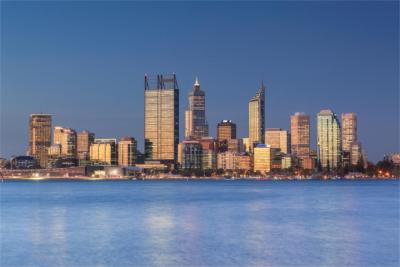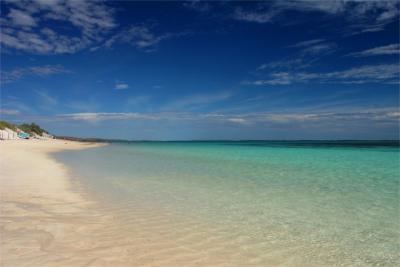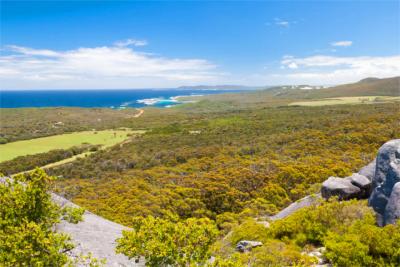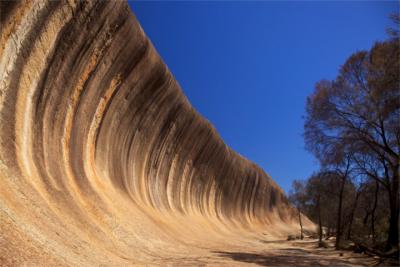Travel Offers
Travelmyne Featureprint
Distance
Kimberley - The Fascination of Nature
Kimberley offers a breathtaking landscape, which consists of deserts and steppes. Impressive mountain ranges, deep gorges and unique rock formations are as fascinating as the culture of the aborigines and unique leisure opportunities.
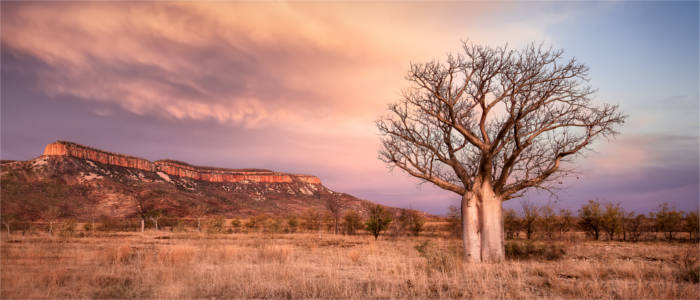
Geography - In the north of Western Australia
Kimberley is a region in the Australian state of Western Australia. It has an area of 424,517 km² and borders on the Indian Ocean, the Timor Sea, the Tanami and Great Sandy Desert and the Northern Territory. The region is generally divided into three areas (north, west and east Kimberley), which are often called the "Kimberleys". The climate in the region is a tropical monsoon climate, which is divided into a rainy season (October to November) and a dry season (April to September). Kimberley's heartland has an average temperature of about 40 °C in summer and almost 30 °C in winter, which makes it one of the hottest regions in Australia and the whole of the southern hemisphere.
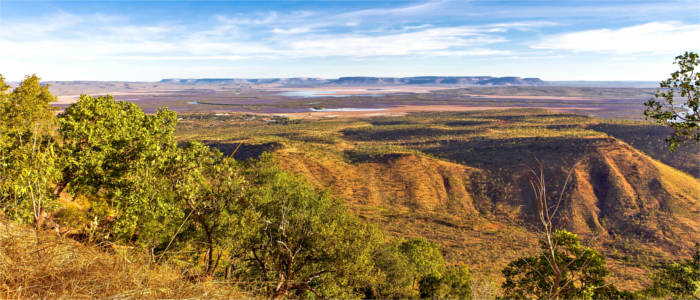
Nature - Rocky beehives
Kimberley's diverse landscape consists of steppes, deserts, vast sandy plains, impressive waterfalls, cliff coasts, deep gorges and white sandy beaches. The Australian boab tree (Adansonia gregorii), which vegetates the local savannas, has become a symbol of the region. In the north, the nature is dominated by the Kimberley Plateau and the Mitchell Plateau with eucalyptus trees, acacias and sandstone gorges. Further south, you see palms and ferns as well as the desert landscape of the Tanami and the Great Sandy Desert. While the west mainly consists of shrubland and sandy plains, the east accommodates the freshwater Lake Argyle and the Ord River. One of the region's highlights and a World Natural Heritage site is the Purnululu National Park with the unique rock formation Bungle Bungle. It is up to 300 metres high and constitutes a breathtaking natural spectacle with its beehive-shaped domes with orange and black stripes. Members of the local fauna are several crocodile species, kangaroos, wallabies, marsh birds and megabats.
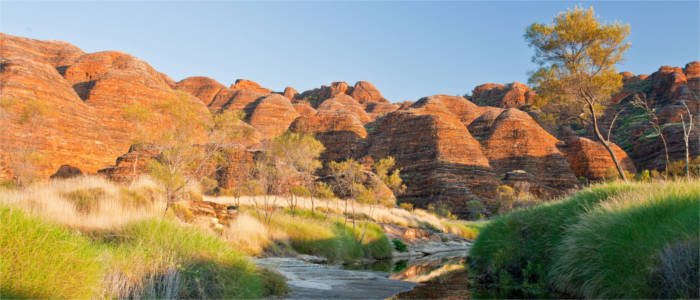
Culture - The traditions and art of the aborigines
The first European settlers took up residency in Kimberly, which was named after the Earl of Kimberley by the pioneer Alexander Forrest, in the 19th century. Thousands of years earlier, the Kimberleys were already settled by Australia's native inhabitants. Kimberley is one of the Australian regions which were settled first by the aborigines. The native inhabitants arrived on the red continent from Indonesia over 40,000 years ago. The Bradshaw Paintings (Gyorn Gyorn), which are among the oldest rock paintings in the world, are valuable cultural assets. Kimberly is home to a number of aboriginal tribes (Bunuba, Djaru, Kija, Bardin, Wunambal, Worara) to the present day. Altogether about half of the local population are aborigines. Travellers can marvel at their unique art in the aboriginal communities and in the art galleries in Broome, Kununurra and Derby.
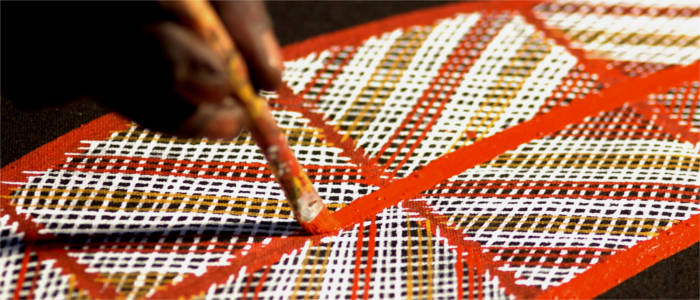
Experience - Gibb River Road and farm adventures
Kimberly is a great destination for experiencing the tranquillity of the Australian outback, for example on a road trip on the Gibb River Road. The unique outback road, which is 660 kilometres long, goes from Derby to Wyndham past breathtaking mountain ranges, impressive waterfalls, aboriginal communities and spacious cattle farms. The latter are not only worth a day trip but a whole holiday. Travellers can learn about the life in the outback and living on an Australian cattle farm during farm stays. You can watch the farmers at work, feed the animals, milk the cows, explore the bushland and listen to local stories at the campfire.
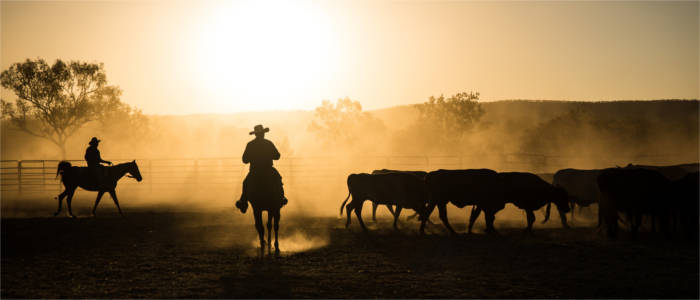
Activities - Water sports at the coast and leisure activities in the outback
Kimberley offers many ways of being active during your holidays. The long sandy Cable Beach (22 km) is a great location for camel rides and the rock formations of the Purnululu National Park invite visitors to a unique hike and a camping trip. A helicopter flight is a great opportunity to see the beehives from a different perspective. It is equally fascinating to see Lake Argyle from above. You can watch the freshwater crocodiles and marsh birds which live in this area on a boat trip. Canoeists enjoy being active on Lake Kununurra and water sports fans get their money's worth at the wonderful coast. Bathing, surfing, snorkelling and fishing are only a few of the numerous leisure activities in and on the water.
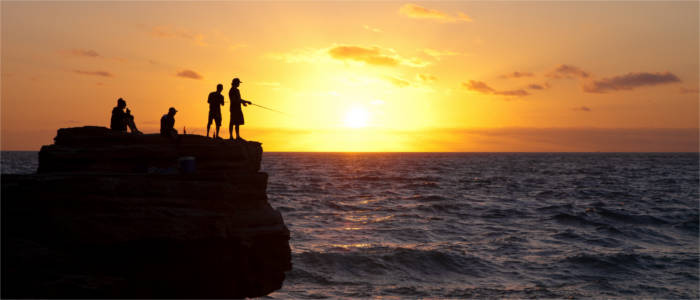
Information
The main connecting road in Kimberly is the Great Northern Highway, which crosses the region in a long arch and ends in Wyndham. Another popular traffic route is the Gibb River Road, which invites visitors to a unique road trip. The best time for travelling Kimberley is the dry season from May to October. It is characterised by sunny, warm days and cool evenings, while monsoon-like rainfalls and high humidity may occur in the rainy season (October to March). The roads which are not asphalted are often flooded during this season and become impassable.
Kimberley is a region in Australia which invites travellers to impressive natural adventures and unique leisure experiences. Farm stays, helicopter flights and camel rides are only three examples of the many activities which make active holidaymakers' hearts leap for joy.

